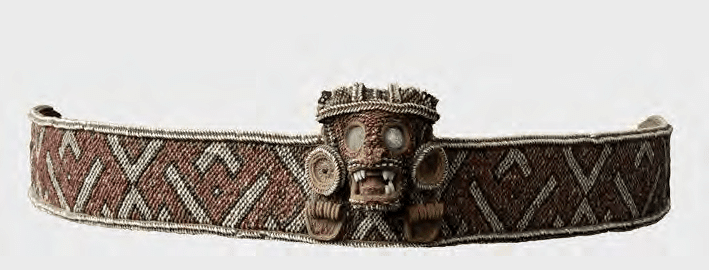Several years ago, a Puerto Rican specialist in 19th century Hispanic Caribbean "Indianist" literature recommended the works of Francisco Moscoso. He specifically mentioned that we must read Tribu y clases en el Caribe antiguo. Foolishly, we scanned parts of that important book but then lost the file. The next best thing was to locate the English-language dissertation that was the basis of the book. "The Development of Tribal Society in the Caribbean" contains the essential points of the later monograph and is far more accessible. Reading it was a challenging and provocative experience as Moscoso sought to refute or problematize earlier Marxist and historical materialist interpretations of the Taino past.
Perhaps the excessively lengthy first two chapters could have been reduced to a single chapter, although one sees their importance later on for Moscoso's deconstruction of Engels, Marx, and Morgan on primitive, communal societies to early class societies. Despite his occasional quoting of Marx, Engels, Mao, and Lenin, Moscoso was a little less dogmatic than we initially expected. By the end of the dissertation, Moscoso has made quite explicit his conclusions regarding burgeoning class formation through the tribute taken from commoners for the benefit of caciques. With the aid of nitainos, or clanlords, and behqiues (shamans and magico-religious specialists), the cacique, or chief, oversaw production, determined military actions, received tribute, and established a "semi-theocratic" system in which cemis and religious practices were linked to the chiefdom.
By rejecting ecological determinism and interpretations by Caribbean archaeologists or historians that ignored or downplayed elements of incipient class formation, Moscoso forcefully argues that the Taino chiefdoms represented a tribal-tributary mode of production en route to class society. The Taino past is charted from prehistoric hunter-gatherer bands in Venezuela to the various cultures and migrations from the South American littoral to the Greater Antilles. Over several millennia, agriculture, ceramics, seafaring, and differentiation of producers and non-producers culminated in the chiefdom. Using comparative data from other chiefdoms, Moscoso offers some possible explanations for the rise of the system while rejecting Engels on the rise of classes. Instead of slavery as the immediate successor to primitive communal bands, the tribal-tributary model was a more likely intermediate step which can be seen in the case of the Taino. The Taino system, to him, would have likely developed into a despotic-tributary state as found among some other indigenous societies of the Americas had it not been for the Spanish conquest.
The specific evidence for the tributary system allegedly established by the caciques of the Greater Antilles can be traced in archaeology, religion, the encomienda system, and the Spanish chroniclers. Since Las Casas, Oviedo and early colonial sources mention the control of labor, storehouses, and the high status of caciques and nitainos who were not engaged in production, one can surmise that there was ample surplus among the polities for greater differentiation and division of labor. The caciques benefited the most from this process since they received a part of this surplus, monopolized higher quality cassava bread, dressed distinctly, and were, based on the encomienda system, presumably incorporated into it for their control of the labor of commoners. From the cacicazgo of Xaragua, for instance, we find evidence of the great wealth and accumulation of goods and power achieved by caciques on the eve of the Spanish conquest. Puerto Rico, through Agueybana as paramount chief, was said to have been similarly powerful. Since we are lacking sufficient information for islands other than Hispaniola and Puerto Rico, Moscoso admits to varying degrees of development of chiefdoms, possibly a dimension of Tainoness as a spectrum of cultures with shared elements. Certainly, the Spanish chroniclers saw a general shared culture in the Greater Antilles and chiefdoms across the region.
Additional evidence of the incipient formation of classes can be found in the ruling ideology of Taino society reflecting the superior status and wealth of the cacique. The areytos, for instance, usually recorded the gests and genealogies of chiefs, indicating that the most important history to the Taino was that of the ruling segment of society. The storage of cemis in the caney or house of the chief, and the role of the cacique as intermediary between a cemi and the community through cohoba rituals likewise reflects the role of the religion in buttressing political authority. Whether or not calling this semi-theocratic or by some other nomenclature is helpful is beyond us, but clearly religion, areytos, and even redistributive feasts came to justifying an order in which some exploited the labor of others, even without the existence of private property. Such a phenomenon was also noted for parts of precolonial Africa by the South African Marxist, Bernard Magubane. The Taino case appears to have been similar, although the Antillean cosmovision may have reflected certain South American perspectivist influences and beliefs not entirely encapsulated in a Marxist analysis.
Overall, this unapologetic Marxist analysis of the Taino cacicazgo raises a number of fascinating questions on the nature of the "state" in the precolonial Caribbean and Caribbean societal formation. However, drawing upon other examples of indigenous societies in the Americas, such as the Iroquois and northern South American societies, raises a number of unanswerable or unknown issues. Were the ritual belts used by caciques, for example, also records of information, like wampum belts? Or, to draw from the classic 19th century histories, to what extent can Nau's claim of communal labor as tribute to the caciques of Hispaniola really be verified for, say, the Bahamas? Furthermore, more recent archaeologists seem to be less certain about the degree of centralization and the size of cacicazgos in Haiti and Puerto Rico. Is heterarchy, rather than hierarchy, what we should be looking for in the Antilles? If so, how does that challenge this Marxist analysis of the Antillean cacique?

No comments:
Post a Comment